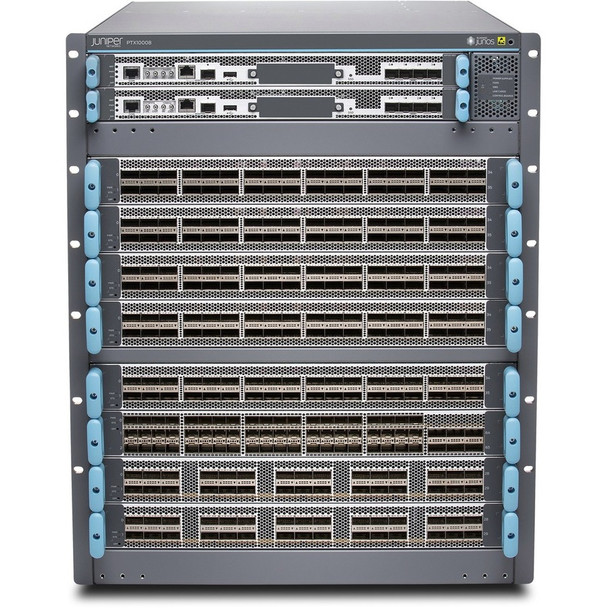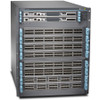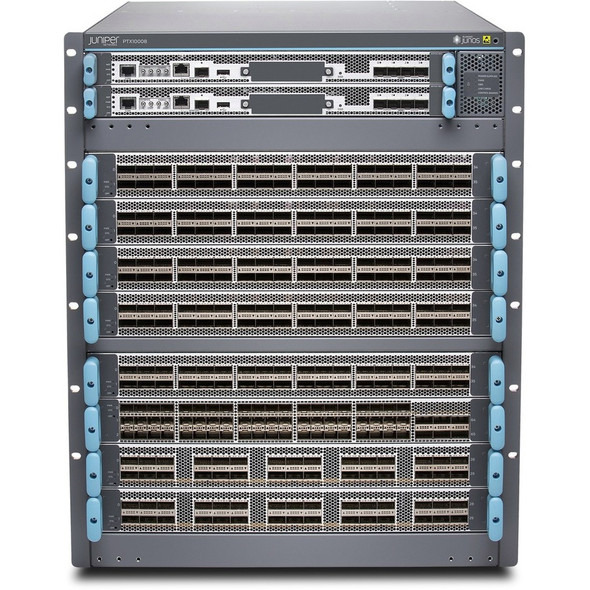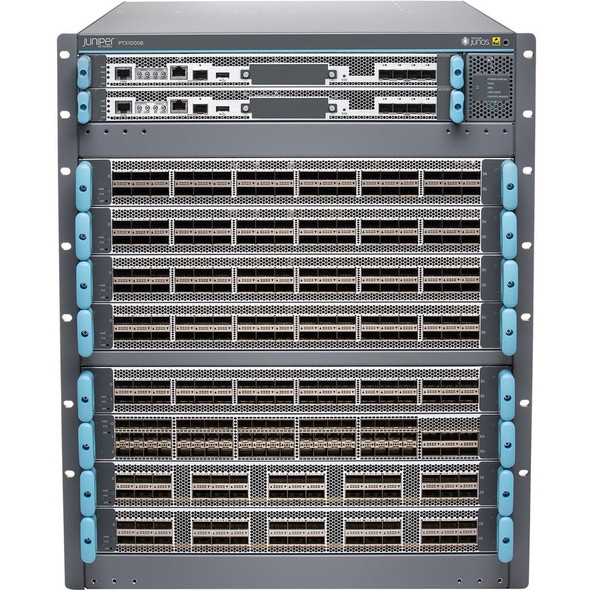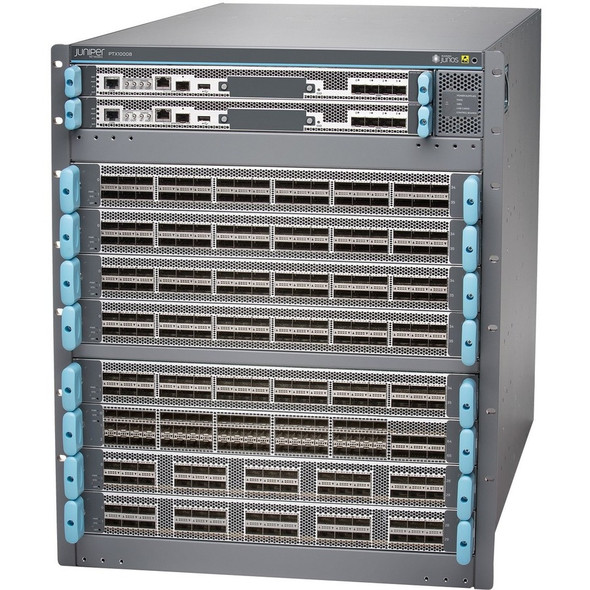Juniper
Juniper (PTX10016-PREM3) PTX10016 Redundant 16 slot chassis for 14.4T LC including 2 Routing Engines 10
- SKU:
- PTX10016-PREM3
- MPN:
- PTX10016PREM3
- Availability:
- On backorder. Usual lead time is 3 weeks. Contact Us for Availability
Description
| Description | |
| Manufacturer: | Juniper Networks, Inc |
| Manufacturer Part Number: | PTX10016-PREM3 |
| Manufacturer Website Address: | http://www.juniper.net |
| Brand Name: | Juniper |
| Product Line: | PTX10000 |
| Product Model: | PTX10016 |
| Product Name: | PTX10016 Router Chassis |
| Marketing Information: | Increasingly sophisticated network operators and users seek highly responsive and customizable cloud-like online experiences and services that align with their unique needs and interests, creating more traffic that consumes increasing amounts of network bandwidth. The demands of the increased network traffic are driving the creation of new core and peering architectures. Cloud routing allows for more centralized, interconnected cores to help operators scale their networks to meet new service-level agreements. Competing with the ability to rapidly expand capacity is the need to reduce operational costs; providers are under enormous pressure to lower margins and compete with new entrants and disruptors that do not have legacy networks to maintain. There is immense pressure on core and peering routers to simultaneously address:
|
| Product Type: | Router Chassis |
| I/O Expansions | |
| Number of Total Expansion Slots: | 16 |
| Network & Communication | |
| Ethernet Technology: | 400 Gigabit Ethernet |
| Network Technology: |
|
| Power Description | |
| Redundant Power Supply Supported: | Yes |
| Power Consumption: | 18000 W |
| Power Source: | AC/DC |
| Physical Characteristics | |
| Compatible Rack Unit: | 21U |
| Form Factor: | Rack-mountable |
| Height: | 930.9 mm |
| Width: | 442 mm |
| Depth: | 889 mm |
| Weight (Approximate): | 270.34 kg |

